Elizabeth Montgomery: 15 Nose-Twitching Facts About the 'Bewitched' Star
Of the many fantasy sitcoms that populated the television landscape of the 1960s, there were few more beloved than Bewitched and its star, Elizabeth Montgomery. Born Elizabeth Victoria Montgomery on April 15, 1933 in Los Angeles, while it's not surprising she became a star given her showbiz heritage, no one could have predicted just how a big an impact she would make.
Like many other actors before and after her, it was a challenge to get attention, but when she did, the parts — whether on the big screen or the small — kept coming her way, continuing to do so even after Bewitched concluded its eight season run in 1972. Typecasting, it would seem, was not a problem thanks to her considerable talents.
Bewitched, of course, cast Elizabeth Montgomery as witch Samantha Stephens, with Dick York (and later Dick Sargent) as her mortal husband Darrin. On the surface it was a typical domestic comedy, but when you add Samantha's abilities and the couple's interactions with her family filled with witches and warlocks — well, it quickly became apparent that there was nothing typical about it at all.
To learn much more about Elizabeth Montgomery, check out these 15 facts about her.
MUST-READ: 12 Spookily Fun Unknown Facts About the Original Bewitched
1. Elizabeth Montgomery's parents were both actors
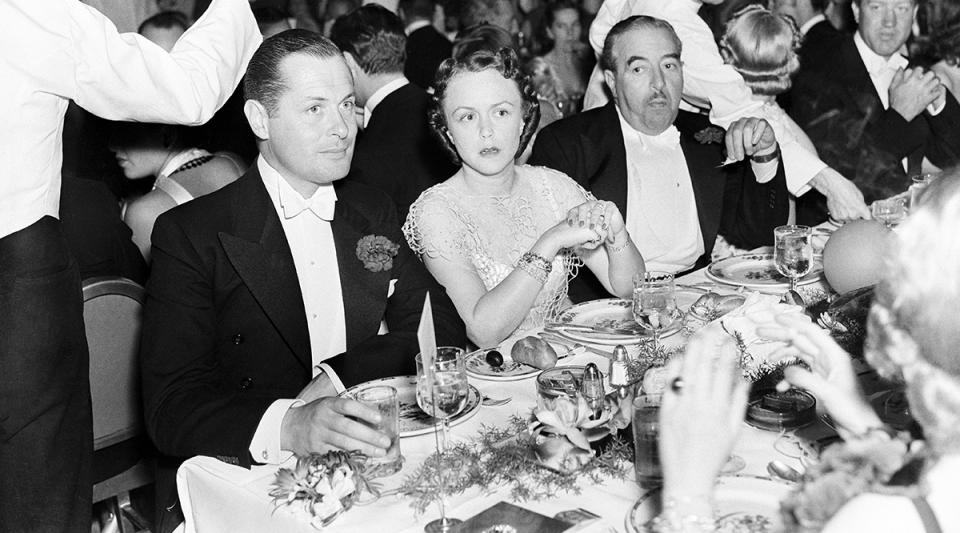
William Grimes/Michael Ochs Archives/Getty Images
Elizabeth Montgomery's mother, Elizabeth Bryan Allen, was a stage actress who appeared on Broadway in Dawn (1924), The Hand Man (1925), A Holy Terror (1925) and Revolt (1928). It was while working on Dawn that she met fellow actor Robert Montgomery, who would enjoy an acclaimed acting career on the big screen in over 60 films between 1929's Three Live Ghosts and 1960's The Gallant Hours. He would also host and star in his own anthology television series, Robert Montgomery Presents, from 1950 to 1957. Allen and Montgomery would marry in 1928, have three children (Martha, Elizabeth and Robert Jr.) and divorce in 1950.
2. The relationship between Elizabeth and her father was a difficult one
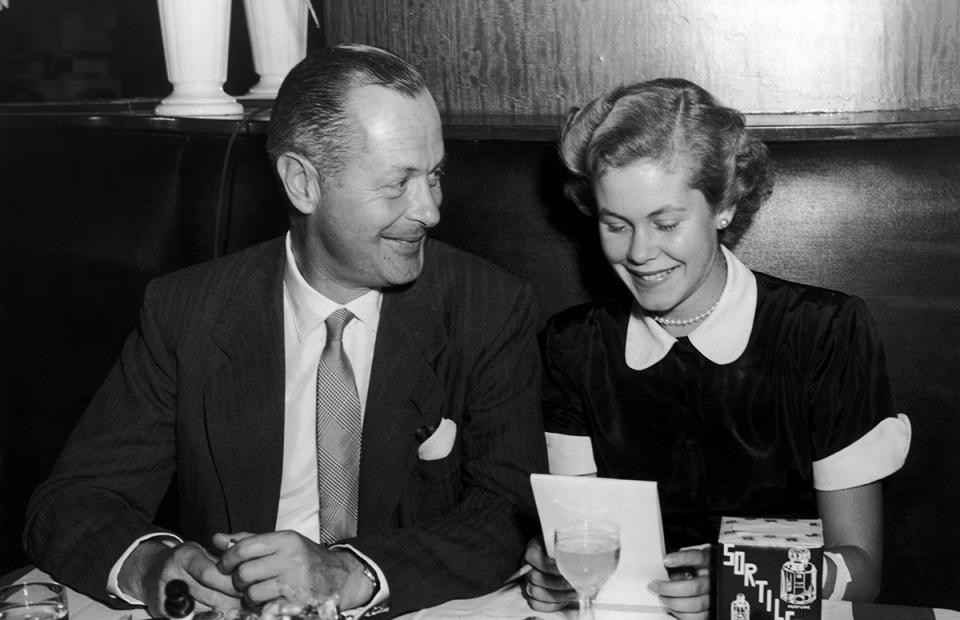
Archive Photos/Getty Images
Herbie J. Pilato, author of the books Twitch Upon a Star: The Bewitched Life and Career of Elizabeth Montgomery, The Essential Elizabeth Montgomery: A Guide to Her Magical Performances and Bewitched Forever, all of which can be ordered from him directly, emphasizes that despite the fact Elizabeth and her father loved each other, things were frequently strained between them. "They were diametrically opposed on several levels," he explains. "That starts with their political views. He was a conservative, she was a liberal. And even though she made her television debut on his anthology series, he never really wanted her to be an actress. In fact, he wanted her to settle down and get married and have a nice 'regular' life."
In a 1955 interview with the Elmira Advertiser, Elizabeth Montgomery said, "My father hasn't always encouraged my acting. For years I announced to him that I was going to be an actress and that I would eventually do pictures. I'm not sure he was in favor of a screen career for me, but then I don't believe I can develop in just one medium. He always just told me to go ahead if acting was what I wanted."
MUST-READ: The 1960s — Your Guide to 60 Classic (and Not So Classic) TV Sitcoms and Where to Stream Them
3. Marriages and divorces impacted father and daughter
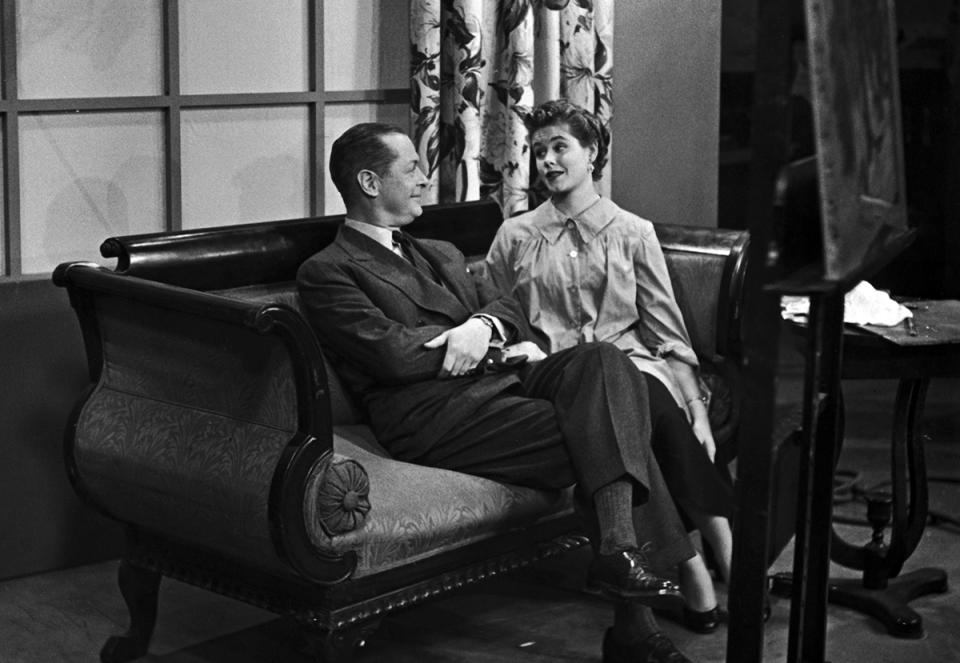
Archive Photos/Getty Images
In 1950, Robert Montgomery divorced Elizabeth Allen, going on to marry a different Elizabeth in the form of Elizabeth Buffy Herkness. According to Pilato, Elizabeth the daughter never forgave her father for doing so, and one has to wonder if her first marriage was a response. In 1954 she married a so-called New York "high-roller" named Fred Cammann, an actor she'd met while working on her father's TV show. But as things turned out, she wanted a career and he wanted a housewife, leading them to divorce a year later. Says Pilato, "Her divorce put a wedge between her and her dad because Cammann was high society."
4. The 'wedge' between them ran deep
In addressing the "complicated" relationship between Robert and Elizabeth, pop culture historian Geoffrey Mark suggests, "Part of it was being the child of a big celebrity, part of it was getting her first acting experience with daddy on his show, and part of it was seeing that daddy was not a very good husband to mommy. Elizabeth resented her father. She as a married woman, irrespective of which of her four marriages we're talking about, did not like having her father visit, did not like exposing her children to her father. She was looking for a man who wouldn't be the cold, withdrawn person that Robert had been with her."
5. Her second marriage was to actor Gig Young
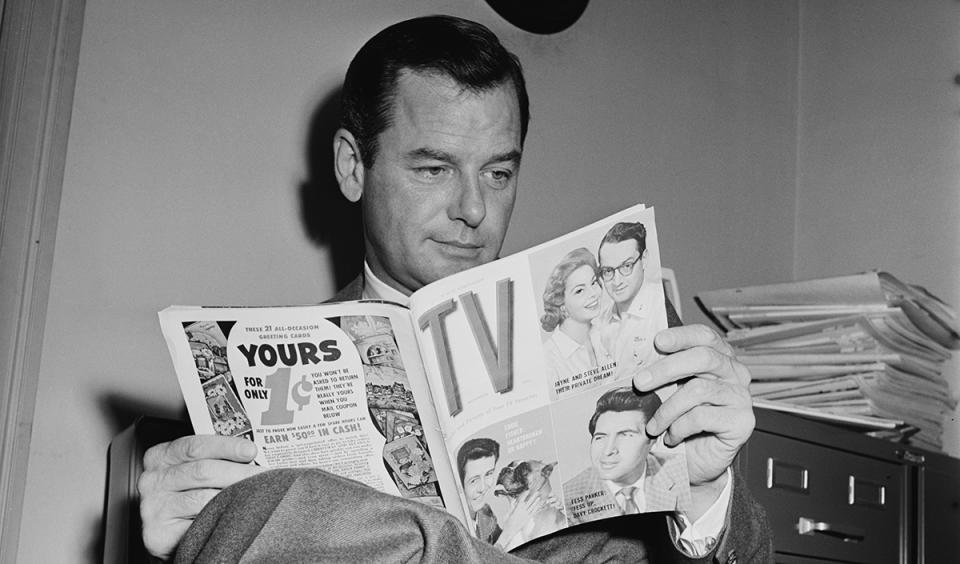
Graphic House/Archive Photos/Getty Images
Divorced in 1955, Elizabeth walked down the aisle again in 1956 with actor Gig Young, who would win the Best Supporting Actor Oscar for his performance in 1969's They Shoot Horses, Don't They? and who Elizabeth Montgomery would be with until 1963. As pleased as Robert Montgomery had been with Cammann, that’s how frustrated he was about this pairing. “She cared about her father,” Pilato says, “but she definitely zinged him a couple of times. If she knew something bothered him, she would do it. The thing is, Gig Young was an older actor, pretty much Robert’s age. Robert Montgomery wigs out and she loved it. She also became friends with Bette Davis, who Robert did not get along with, and she loved his reaction."
MUST-READ: 1950s TV Sitcoms — 40 Classic (and Not So Classic) Shows, and Where to Stream Them
Adds Geoffrey Mark, "“I’m not sure if he was diagnosed as being bipolar, but what I’ve heard about Gig Young's behavior sure sounds like it. Which meant that Elizabeth was riding an emotional roller coaster being married to him. Up and down, up and down. She didn’t want that. She lived that as a child. And sometimes, even though we don’t want to, we repeat previous family relationships. Many of us end up with people who remind us of our own parents.”
Tragically, in 1978, three weeks after the wedding to his fourth wife, Gig Young shot her and then himself to death for no reason that ever became apparent.
6. Throughout her school years, Elizabeth Montgomery thought of nothing but acting

Silver Screen Collection/Getty Images
Her education consisted of the Westlake School for Girls in Holmby Hills, California, followed by the Spence School in New York which, in turn, led to her studying at the American Academy of Dramatic Arts for three years. As she shared with The Los Angeles Times in 1954, "I'm sure I gave many of my Westlake teachers gray hairs, because the only things I could concentrate on were studies relating to dramatics. Acting is my main objective in life."
7. Elizabeth Montgomery made her debut on Robert Montgomery Presents
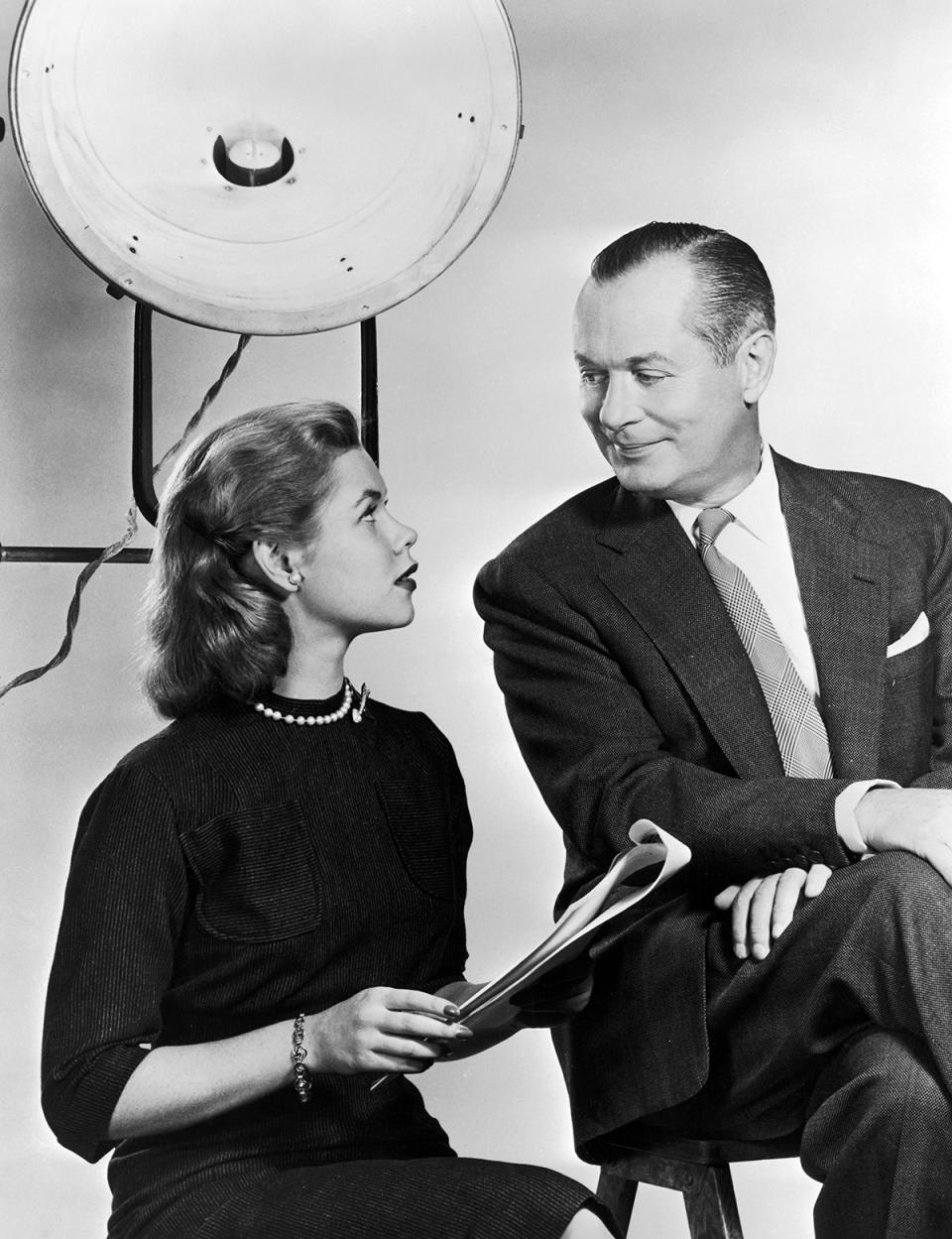
Archive Photos/Getty Images
Despite the difficulties between daughter and father, she would make her acting debut in the first — out of a total of 30 — appearance on his television series, Robert Montgomery Presents, playing his daughter. She told the media at the time, "It was the chance I had been waiting for. I figured it was tailor-made for me, because who could put more into the role than a real-life daughter?
"I had to audition with about dozen other people," she added, "but won the part. Everyone was on pins and needles as the hour for the show approached. Dad called me into his dressing room for an old-fashioned, last-minute pep talk. I assured him everything was under control so far as I was concerned. I don't know whether he could tell that I was shaking all over. But when the camera came alive for the show, I had no trouble concentrating on my part and the program went off without a hitch."
8. She had an extensive career prior to Bewitched
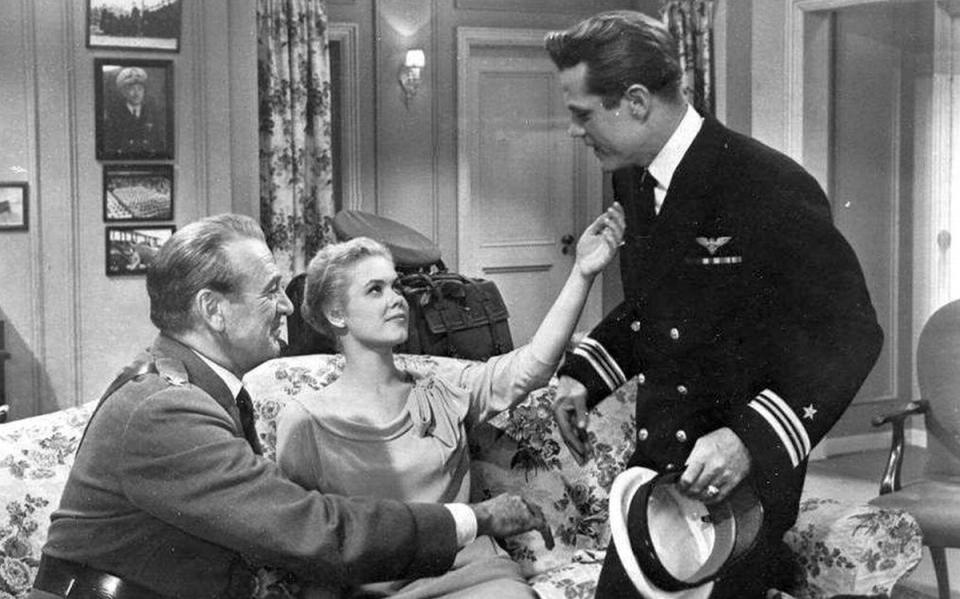
?WBD/courtesy MovieStillsDB.com
Beyond appearing in those 30 episodes of Robert Montgomery Presents between 1951 and 1956, Elizabeth Montgomery would make another 40 appearances on different shows (even being nominated for an Emmy as a result of her performance on The Untouchables in 1960). On the big screen, she made her debut in 1955's The Court-Martial of Billy Mitchell, followed by seven movies (three on the big screen, four on the small).
9. Johnny Cool changed her life
Elizabeth Montgomery starred in the 1963 film Johnny Cool, which was directed by William Asher, with whom she did not initially get along. "In fact," laughs Pilato, "it was hate at first sight, because she was late for the audition. But they fell in love with each other." And would marry in 1963, having three children together.

Martin Mills/Getty Images)
Elaborates Mark, "Bill Asher had a very complicated personal life at the time he met Liz. He was separated from his first wife, who was the mother of his children from that marriage. He was directing Liz in Johnny Cool and was having an affair with three women at the same time. To his credit, Bill gave up the other ladies and stayed with Liz. He jumped into work again with the Beach Blanket movies with Frankie Avalon and Annette Funicello. And then they got the script to Bewitched."
10. Love Led to Bewitched
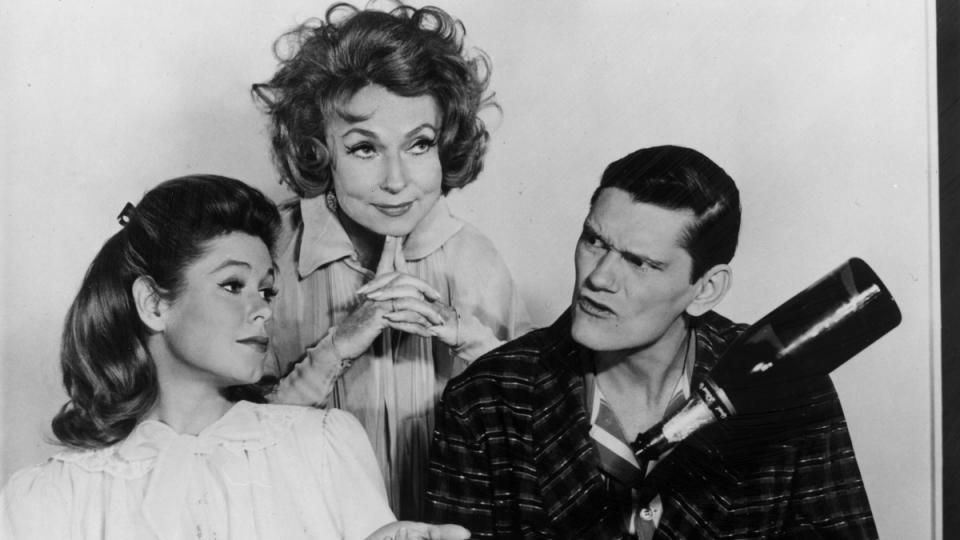
According to Pilato, Bewitched was a perfect project for the duo: "After they fell in love, they just wanted to work together. They wanted a regular series, because a series would give them the opportunity to get to work together on a daily basis in a more routine way as opposed to a feature here and there."
Mark notes that much of the Bewitched we know came from Asher. "A lot of the original concept as created by Sol Saks was very different," he explains. "Bill is the one who came up with the change of point of view, naming the characters differently and sharpening their relationships."
MUST-READ: Paul Lynde — 12 Revealing Facts About the Bewitched and Hollywood Squares Star
11. Elizabeth Montgomery came up with Samantha Stephens' nose-twitch
On Bewitched, Samantha usually works her magic by twitching her nose. In an interview with The Journal News, she reflected, "Bill said to me once, before I ever did Bewitched, ‘You do a funny thing with your nose whenever you get impatient.’ Then he asked me to do it for him. I couldn’t. I didn’t know what he meant. Then one night, my nose twitched and Bill said, ‘That’s it!’ and then I knew. We were at a Dodger’s game once and the bases were loaded, there were two outs and Sandy Koufax was coming up — he can’t hit — but Bill said to me, ‘C’mon, Liz, twitch,’ so I did and Sandy walked and the winning run scored. Then I was at a Chicago Cubs game and I twitched my nose for Ernie Banks, who hadn’t hit anything all day. When I twitched, Ernie hit the ball right out of the park.”
12. Eight seasons in, the magic was gone in front of and behind the camera
Bewitched came to an end in 1972 after eight seasons and 254 episodes. And although ABC was willing to continue, Elizabeth Montgomery was not, largely because she wanted to explore new opportunities and, more importantly, her marriage with Asher was falling apart.
Mark sums up the situation this way: "With the success of Bewitched and the films he was directing and producing, Bill became enormously busy and sometimes one cannot see what’s right in front of one’s eyes. Liz was becoming unhappy. As much as she appreciated the great success of Bewitched, she saw herself as a multi-talented actor who could do all kinds of things. She felt stifled by the program, so she was creatively unhappy.”
"If you look at that last season," adds Pilato, "she’s dragging her feet. She’s just gone. She’s bored out of her skull and you can see it. Now everybody thinks ABC canceled the show because of low ratings. Elizabeth Montgomery canceled the show."
13. Elizabeth Montgomery became the 'Queen of the TV Movies'
Between 1972's The Victim and 1995's Deadline for Murder: From the Files of Edna Buchanan, the actress appeared in two dozen TV movies, two of which are significant for different reasons. In 1973's Mrs. Sundance (a sequel of sorts to the feature film Butch Cassidy and the Sundance Kid) she met and worked with actor Robert Foxworth, the two of them quickly falling in love and being together until the time of her death (though they only married in 1993). Theirs was the love story she'd been waiting all of her life for.
In 1975's The Legend of Lizzie Borden, she plays the title role of the woman accused of murdering her parents in 1892. This was such a change of character from Bewitched, that everyone took notice — critics and viewers alike — and with this and other films, she drove home her diversity as an actress.
14. Activism was an important part of Elizabeth Montgomery's life
In her private life, Elizabeth Montgomery was a staunch liberal and devoted a great deal of energy to political causes, among them women's rights, AIDS activism and gay rights, while also volunteering at the Los Angeles Unit of Learning Ally, which records educational audio books for disabled people.
15. The end came for Elizabeth Montgomery in 1995

?CBS/courtesy MovieStillsDB.com
Although she didn’t talk about it, over the years Elizabeth Montgomery had battled colon cancer, truly believing that she had beaten it. Unfortunately, in the spring of 1995, she thought she was suffering from influenza or something similar while filming Deadline for Murder and waited until shooting had wrapped to go to the doctors. Sadly it was actually the return of the cancer which had, by that time, spread to her liver and was inoperable. She chose to return home to Robert rather than stay at the hospital, passing away on May 18, 1995 at the age of 62, leaving generations of fans heartbroken.
